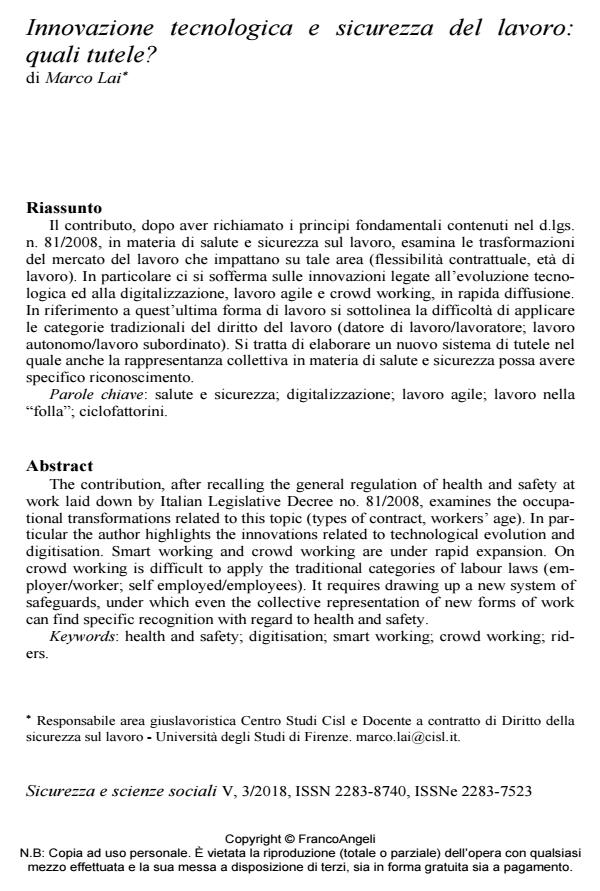Innovazione tecnologica e sicurezza del lavoro: quali tutele?
Journal title SICUREZZA E SCIENZE SOCIALI
Author/s Marco Lai
Publishing Year 2019 Issue 2018/3
Language Italian Pages 13 P. 83-95 File size 170 KB
DOI 10.3280/SISS2018-003006
DOI is like a bar code for intellectual property: to have more infomation
click here
Below, you can see the article first page
If you want to buy this article in PDF format, you can do it, following the instructions to buy download credits

FrancoAngeli is member of Publishers International Linking Association, Inc (PILA), a not-for-profit association which run the CrossRef service enabling links to and from online scholarly content.
The contribution, after recalling the general regulation of health and safety at work laid down by Italian Legislative Decree no. 81/2008, examines the occupa-tional transformations related to this topic (types of contract, workers’ age). In particular the author highlights the innovations related to technological evolution and digitisation. Smart working and crowd working are under rapid expansion. On crowd working is difficult to apply the traditional categories of labour laws (em-ployer/worker; self employed/employees). It requires drawing up a new system of safeguards, under which even the collective representation of new forms of work can find specific recognition with regard to health and safety.
Keywords: Health and safety; digitisation; smart working; crowd working; rid-ers.
Marco Lai, Innovazione tecnologica e sicurezza del lavoro: quali tutele? in "SICUREZZA E SCIENZE SOCIALI" 3/2018, pp 83-95, DOI: 10.3280/SISS2018-003006